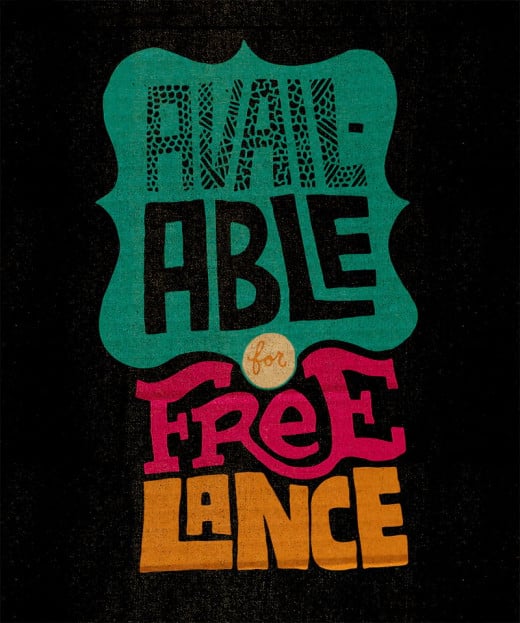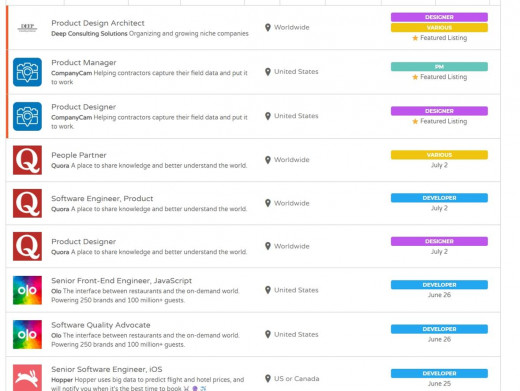Independent Contractor and Freelance Work: Easiness vs Value

Those who tell to the persons who are considering beginning to work as freelancers that one can get started with nothing at all, just a computer with access to the internet don’t warn the reader about the other things that such an approach requires.
Namely: verifiable work experience and/or recommendations.
They make it look easy, but it’s not.
That approach may be okay for someone who has a verifiable reputation and work track records in the brick-and-mortar world.
It’s bad advice for someone that wants to start freelancing in an industry that she or he did not work in before.
It is not a good course of action for someone new to the world of work at all.
Also, if one is lazy, born to be a follower, and co-dependant, that advice is more likely to be taken to heart. It’s the path of less resistance.
Not having to need practically anything to get started, and just going to the job marketplaces to search for a glorified 9-5, telecommuting job is a poor excuse for making an effort, and it’s certainly not freelancing.
One can hustle through online marketplaces to get a virtual, telecommuting, or remote client, yes, but that isn’t what freelancing is about.
One can do it, but not forgetting that one did set oneself up to be a freelancer that works on a gig-by-gig basis or a project and contract basis, generally intending to remain unattached to the client.
Note that I said the client and not the employer.
The gig calls on online job marketplaces are, most of them, just a parroting of the old way of doing things, but kind of actualized with a telecommuting veneer.
Be Mindful of Where You Look for Work

The sites that only have calls for remote projects and gigs are very hard to come by. Here are a few examples:
- skipthedrive.com
- remote.com
- jobspresso.co
- remote.io
What I’ve found is that if one doesn’t have a track record, persons who can recommend you, or similar old-style advantages, one must build a lot of real, meaningful, and high-quality social proof for things to even have a tiny chance of working out.
It takes working in a lot of other departments of the job, and especially it takes time and effort to find what works, what doesn’t, and where are the gaps in one’s approach to doing business.
The Approaches I Use
Going to work portals, writing content, and hustling, are is not the only things I do.
If you decide to follow this approach, be prepared to waste a lot of time, and at the end of the year have very little to show for it.

The Rat Racer
I hustle for at least one hour daily in job portals. If I find a gig that suits me, I send a cover letter. If I don’t receive a response, I know I should follow up at least two times. I try following up, but I never remember to do it.
I try to be as humble as I can. To have a capacity to detach from my ego when work is involved. Still, some job listings are frankly hilarious and a waste of time to just read them.

The Content Caterer
I monitor calls for content submissions at least half an hour a day and try to work for the ones I see myself as a good fit.
This way of doing freelance writing is so much more relaxed, free, and valuable than the rat race approach.
Wanting to freelance as a content caterer is much more rewarding in the sense that all the time one puts into it has way more value than just sending C.V.s and brown-nosing for a job.
Many buyers ask for pitches or synopses, but most of them accept pieces of content that are already finished.
The time you put into searching, curating, and knowing buyers of content is just the beginning of something that will pay.
If you research the buyer’s brand or service, its content, and its audience, and if you put in the research and development hours into your speculative content that you intend to sell to them, someday, some piece of content your prospects will certainly buy.
A piece of content, be it an article, an essay, or whatever, you write on speculation that the buyer will want and buy is time well invested because even if the entity you wrote it for doesn’t buy it, you can sell it elsewhere.
If you offer it for a while and nobody seems to buy it after, say 5-7 tries, then at least you have a piece of content that you can put to another use.
You can use the content in your site if the topic matches your site’s niches. If the content that didn’t sell is not a good fit for any of your sites, you can still give it to other uses.
For example, you can publish it on sites like HubPages, and other revenue-sharing websites. If the content is good, it can generate residual income over time thanks to how revenue sharing sites work.

The Self-Employed Content Site Owner
This is the most enterprising occupation I perform. I originally built my site copywriter-martin.win as just a freelancer portfolio site.
Because I never stopped improving it, it grew up. It evolved into not just a portfolio but also a blog. Now that I have a blog, I write articles in the niches I chose and use those articles to offer links to affiliate products.
Affiliate links aren’t everything, though. There are a lot of ways to monetize a content site. Monetization is a big topic and it deserves a complete article dedicated to it.
This article is accurate and true to the best of the author’s knowledge. Content is for informational or entertainment purposes only and does not substitute for personal counsel or professional advice in business, financial, legal, or technical matters.
© 2020 Martin Wensley








